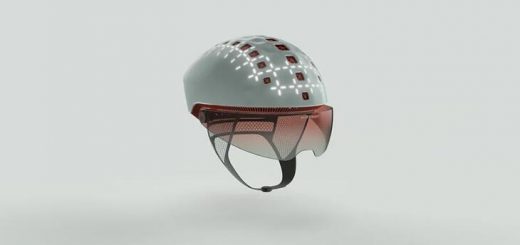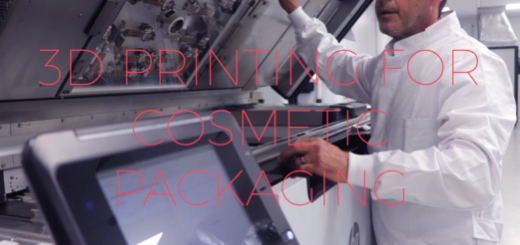Go-Ahead for Digitally Manufactured Concrete Staircase
The next unit at NEST, the research and innovation building of Empa and Eawag, goes by the name of STEP2. For about two years, partners from research and industry have been working on various innovations in the fields of circular economy, digital and industrial fabrication, building envelope and energy systems, turning them into products ready for market entry. One of them has now reached an important milestone: A worldwide unique staircase manufactured using 3D-printed formwork and prestressed with an innovation from the Empa spin-off re-fer has passed the final prototype tests.
It is one of the major challenges in the upcoming NEST unit STEP2: a concrete staircase whose shape is reminiscent of a human spine. Although the unit is still in the planning stage, parts of the staircase have already been produced as prototypes. The unit is pursuing an ambitious goal: Only what has a future in the construction industry will be built. Together, the partners work consistently towards market readiness – which is also the case with the staircase.
“Over the past two years, the project team has jointly developed a completely new concept for the production of customized concrete elements. This was only possible because the experts along the entire value chain worked together in an open innovation approach,” says Enrico Marchesi, innovation manager at NEST and project manager of STEP2. The interdisciplinary project team was assembled in cooperation with the scouting and incubation experts of the main partner, BASF. It consists of the architectural firm ROK, which is responsible for the project management, the ETH Zurich chair for Digital Building Technologies, 3D printing experts from the BASF subsidiary BASF Forward AM and the 3D printing company New Digital Craft, experts from the precast concrete manufacturer SW Umwelttechnik, engineers from the engineering firm WaltGalmarini and specialists from the Empa spin-off re-fer.
![]() Customized solutions
Customized solutions
The STEP2 staircase impressively demonstrates the realization of concrete structures with the help of computational design and the latest 3D printing technologies. By using 3D printed formwork, it is possible to create more complex shapes than with conventional custom formwork. At the same time, the amount of material required can be significantly reduced.
The process enables customized concrete solutions with a high level of detail that can be optimally adapted to the respective application. In addition, it also holds great potential in restoration, for example in the renovation of historic buildings.
![]() High complexity
High complexity
 The 3D-printed formwork achieves high precision for the individual stair steps. Image: New Digital Craft
The 3D-printed formwork achieves high precision for the individual stair steps. Image: New Digital Craft
The design of the staircase comes from the ETH Zurich chair for Digital Building Technologies. Based on this, the project team developed a complex, parameter-based formwork system for the individual steps, which is produced using 3D printing. “It was important for us to use digital fabrication in such a way that we could produce extremely filigree concrete elements. A key criterion for the system was the reusability of the formwork for the production of multiple steps. At the same time, we had to consider the requirements of 3D printing and the material as well as the conditions when filling the formwork,” explains Benjamin Dillenburger, head of the Digital Building Technologies team. In order to meet all these requirements, the exchange within the entire project team was crucial.
“To ensure that the 3D-printed formwork can be used for several steps, we chose a suitable coating. With regard to sustainability, we opted for a material that can be detached from the formwork again. With that approach, we can ensure that the material is separated and sorted properly,” says Jörg Petri from New Digital Craft. He and the Virtual Engineering team of BASF Forward AM brought their years of 3D printing expertise to the project.
“For BASF Forward AM, the project is an important milestone to show that the materials used can hold up to the high requirements. It contributes to our strategy to realize formworks using 3D printing as an alternative to conventional formwork construction,” says Anke Johannes, Director Sales Europe at BASF Forward AM. For the formwork material, the team chose the Ultrafuse® PET CF15 filament because of its excellent properties for concrete formwork applications. In the end, the concept for manufacturing and assembling the formwork elements was ready.
![]() Reality check
Reality check
 The first prototypes of the stair steps in Empa’s construction hall. Image via Empa
The first prototypes of the stair steps in Empa’s construction hall. Image via Empa
When the time had come to bring the stairs to reality, SW Umwelttechnik produced the steps in its own factory with the help of the formwork. The material used is ultra-high-strength fiber-reinforced concrete. “Our concrete allows for very thin, complex shapes that could not be realized with normal reinforced concrete. It’s great that we can demonstrate this so impressively with the staircase in the STEP2 unit,” says Klaus Einfalt, CEO of SW Umwelttechnik.
The engineers of WaltGalmarini are responsible for calculating and assessing the structural analysis. To check whether the calculated values correspond to reality, the steps were sent to Empa. There, Empa experts subjected them to various load tests under the supervision of the engineers. The first prototype consisting of three steps, which were all tested individually, largely met the expectations and at the same time provided new findings for optimizing the system.
 Empa experts subjected the staircase system to various load tests. Image: Empa
Empa experts subjected the staircase system to various load tests. Image: Empa
In the subsequent prototype, not only the statics but also the structure of the staircase system was put to the test. The team assembled three steps on top of each other and prestressed them using the innovative memory®-steel of Empa’s spin-off re-fer. In the process, re-bar R18-bars were placed in predefined cavities and mechanically anchored. The prestressing was performed by heating with electricity. Further tests were then carried out to analyze the load-bearing capacity of the steps individually and the system as a whole. The result: The engineers considered the overall system to be reliable.
“I am very pleased that the staircase was able to convince not only on paper but also in practice. This represents an extremely important milestone for us in the project,” says Michael Knauss from ROK. With this proof-of-concept, the final staircase can now be produced – another important step towards the realization of the NEST unit STEP2.
Source: Empa
For press release, welcome to send to 3D Science Valley at 2509957133@qq.com




Recent Comments